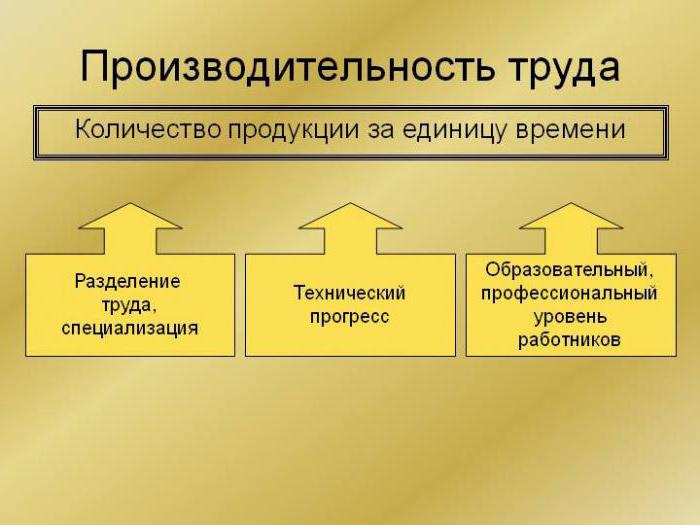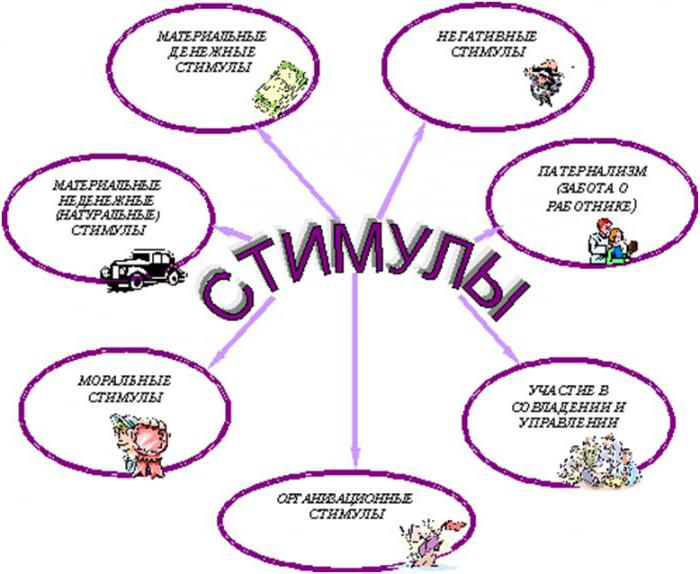Labor activity is an effort that is expediently aimed at achieving a certain result. This is the main feature of labor. It always requires certain mental and physical strength. The result of labor will depend on this. But this achievement is not accepted as the main task. For the result shows a measure of the cost of efforts to achieve the goal. And since the individual qualities of the employee are manifested in this process, the comparison of labor and its evaluation is an important factor.

Basic concepts
The set of actions of the employee on a reasonable and useful change in the subject of labor is a labor process. The purpose of his organization is to ensure that the task is achieved at the lowest cost, including working time, with highly efficient use of equipment and high quality of the final product. Improvement of labor results is determined by a change in the set of methods and labor methods of an employee and / or group of employees.
Measures to study the conformity of the quality and quantity of labor to the requirements of the technological process of production are an assessment of labor. Assessment of labor results is one of the many functions of personnel management of an enterprise. It shows the level of effectiveness of the work performed. Evaluation of labor results is one of the components of the assessment of business activity of the personnel of the organization. It shows how the result of the work of the staff corresponds to the set goals, standards, the technological process and the planned indicators.
Labor assessment allows you to accumulate the results of each employee for a certain time period. That is, workers are not compared among themselves, but their work with accepted standards.
What is labor assessment and why is it needed
Any modern organization, regardless of how extensive the experience of its employees or their high qualifications, is aimed at the result. That is why labor assessment is so important. Evaluation of the results of labor characterizes the effectiveness of the organization in the context of the goals and objectives for each employee.

It's no secret that an employee can successfully fulfill all the points of the job description, but, for example, with the involvement of other employees or frequent extension of time, while the work must be done quickly, efficiently and at the lowest cost, including time . Assessment of labor and its effectiveness is aimed at identifying such workers.
Labor assessment factors and their classification
The following factors influence the content of staff labor and its final results.
Natural biological:
- floor;
- age;
- geographic environment;
- health;
- abilities;
- seasonality;
- mental abilities, etc.
Socio-economic:
- the state of the economy in the country;
- level of protection by social authorities;
- state requirements in the field of labor and wages, possible restrictions;
- standard of living;
- motivation to work;
- employee qualifications.
Technical and organizational:
- the nature of the tasks assigned;
- ability to use scientific and technological achievements;
- the complexity of the work performed;
- ability to perceive the quality and volume of information;
- working conditions (ergonomic, sanitary, aesthetic, etc.).

Socio-psychological:
- moral climate;
- attitude to work;
- psychophysiological condition of the employee.
Market:
- multi-layered economy;
- unemployment;
- entrepreneurship development;
- bankruptcy;
- volume of privatization and its level;
- inflation;
- corporatization of an enterprise;
- price liberalization;
- independent choice of system and method of remuneration;
- competition.
Consideration of the described factors is necessary in order to evaluate the result of the work of each employee in certain conditions and in the time period. Analysis of the results of the work of various categories of personnel differs in tasks, indicators, significance, characteristics and complexity of calculating the results.
Differences in the assessment of categories of personnel
The category of workers, especially pieceworkers, is most easily evaluated. Qualitative and quantitative indicators of workers in such a system of remuneration are expressed only in the quality of manufactured products and their quantity. In order to evaluate the result of the work of the laborer, you need to compare the planned task with the result of the work.

Assessing the work of specialists or managers at various levels is more difficult. This is due to the problem of assessing their ability to directly influence the activities of a single managerial link or production site. If the final result of the work of a representative of the administrative apparatus is assessed in a general way, then it is necessary to characterize the level or degree of achievement of the management goal at the lowest cost. In this case, it is important to determine quantitative or qualitative indicators that will accurately reflect the ultimate goals set for the unit, site or the entire organization.
The indicators themselves are diverse. This is the quality of the actions or work performed, its volume, value, etc. Labor productivity requires a more complex approach with an increased set of indicators.
Key concept
To analyze the results of labor, it is necessary to adopt evaluation criteria. Each organization should highlight the so-called threshold with generally accepted requirements (plans, norms, etc.). That is, their performance or non-performance will affect a satisfactory or unsatisfactory assessment of labor.
Based on this, when setting the evaluation criterion, it is necessary to take into account:
- specific tasks for the solution of which the results of the assessment will be used (career ladder, salary increase, dismissal, etc.);
- the category and position of the employee for which the criterion is established taking into account differentiation, depending on various factors (complexity of the production process, responsibility, nature of activity, etc.).

It is customary to distinguish three categories of employees of the administrative apparatus. And each of them has its own function in the management process: experts carry out the development and preparation of the solution, the next link draws them up, and the management takes and evaluates the decision, as well as monitors its quality and controls the timing of execution.
The result of managerial work
Since there is a division in the administrative apparatus, the leader is evaluated through the results of labor at the enterprise, that is, by summing up the results of the production and economic activities of the entire organization or its unit. Compare, for example, for a single period, the growth of the customer base, the implementation of plans, profit indicators. It also takes into account the socio-economic conditions of work subordinate to the head of staff. This may be the motivation of employees, the level of remuneration, etc.
The result of the work of specialists characterizes the volume, quality, completeness and timeliness of the duties performed, fixed by the job description. When choosing key indicators of this link in the management team, they take into account their direct impact on the final result of the entire organization, as well as the fact that specialists occupy a significant share of the staff’s working time, they are usually few, but they constitute almost 80% of the total result and lead to the goal the whole organization.
Labor productivity
An equally important indicator for characterizing the results of labor. The higher it is, the less costs are required for the production process. Labor productivity characterizes the profitability of the enterprise.This indicator is calculated for a single period. The data obtained make it possible to draw up planned targets: to calculate future volumes of output, and with them the revenue, draw up estimates, purchase materials, hire workers, etc.
Labor productivity is characterized by two indicators:
- production, which shows the volume of products manufactured by one worker in a certain period of time (hour, day, week);
- labor intensity, which shows how much time a worker takes to produce one unit of production (or a part of it).

Economists argue that a competent approach to labor productivity allows, significantly saving on payroll, to increase the profits of the organization.
Economic results of labor
In the current market economy, the general category that allows us to characterize the results of labor detail of the entire work collective (including owners and employees) is profit. The process of establishing it goes through three stages. On the first, they determine the balance profit, on the second - the estimated profit, and only on the third they receive net profit. It is distributed under various articles within the enterprise.
According to the same scheme, it is possible to trace the formation of economic results of labor of all personnel of the organization.
Thus, book profit expresses the results of non-production and production activities of the enterprise. The balance sheet contains the amount of profit: from the sale of goods (services), from other sales and non-operating expenses and income.
Estimated is part of the carrying amount. This is the profit, net of tax and rental payments, interest on loans (payments by the company for budgetary obligations), other creditors, owners of natural resources, etc. Each of these payments, within the framework of legislative norms, represents a compensatory, fiscal, or stimulating function.
Net (or retained) profit is obtained from the calculation by deducting from it the dividends to be distributed among the shareholders of the company. The remaining amount is used for the development of production and / or consumption. For this purpose, two funds are created: social and investment.
A small share of net profit is left to the management of the organization as a quick reserve.
The ability of the enterprise in the current unstable economic conditions to provide profitable activities based on high incomes of the organization’s employees characterizes the result of labor. Labor activity from an economic point of view in this case can be combined into three groups:
- Factors characterizing the products of labor (work and services, quality and volume of goods produced).
- Factors showing the quantitative and qualitative composition of the hired personnel, the level of payment and the degree of employment of employees.
- Factors that form the cost of production (compared to market prices). Their structure and level of costs.
Evaluation of labor productivity should be considered from two sides: quality and volumetric.
Staff incentive
One of its components is reward. The goal is to attract an employee, consolidate the existing staff, promote highly efficient labor and control labor costs.
A reward for a person can be everything that he considers valuable to himself. The concept of value is very specific. There are rewards for labor internal and external.
Internal reward - this is the work process itself, the feeling of achieving a goal or task, the significance or content of the work performed and self-esteem. To ensure such a reward is simple: it is enough to create the necessary conditions for work and to set exact tasks.
External remuneration for labor is given by the organization.This can be praise, career advancement, recognition, symbols of prestige or a new status, salary increase, additional leave, cash payments, repayment of insurance or other expenses, etc.
Remuneration is divided into tangible and intangible (moral, social, creative). And there is also collective and individual reward.

Basic rules of remuneration
They are generally accepted and effective:
- Award or reward morally necessary quickly enough. The employee receiving the remuneration must not lose the connection between the recognition of the administration and his contribution to the common cause.
- Encourage monetary recommended for the results of the work, and not for the efforts made to achieve them. Moreover, the results should positively affect the profit of the organization.
- The remuneration must correspond to the achievements of the employee in his field of activity.
- Increase promotion when things are going well in the organization and decrease when profits decline.
- Carry remuneration in the form most attractive to a particular employee.